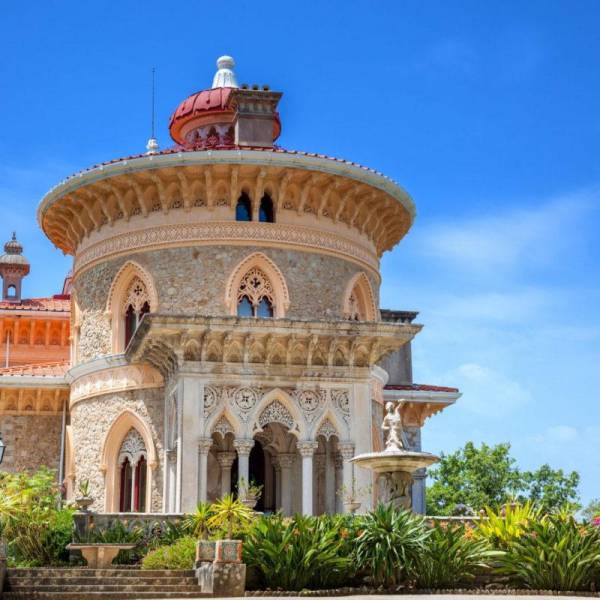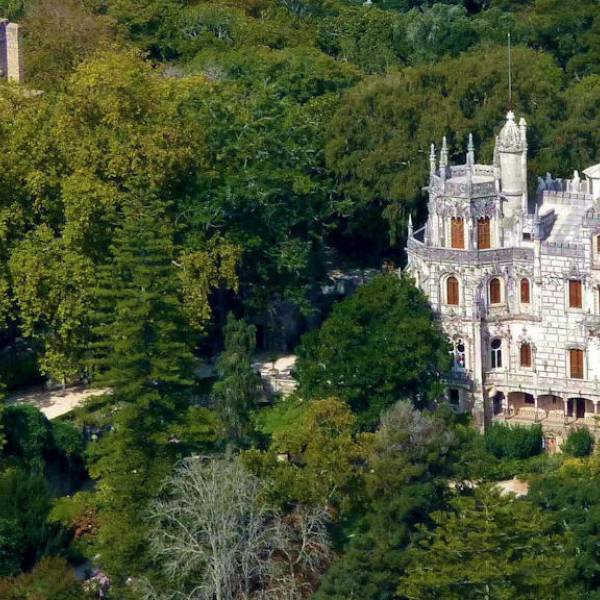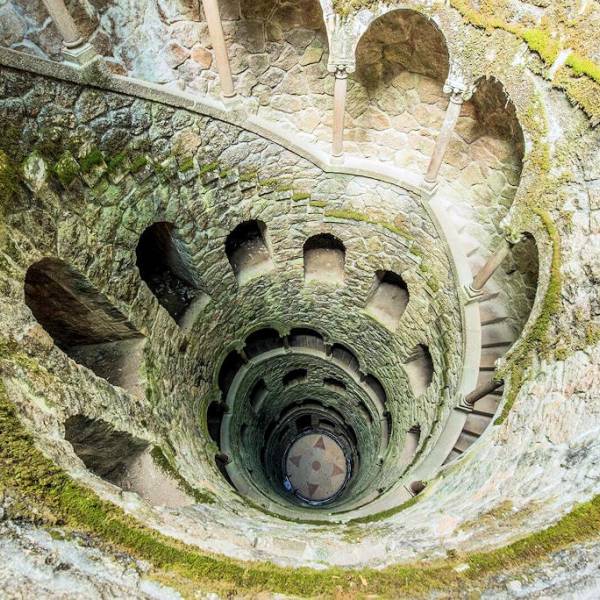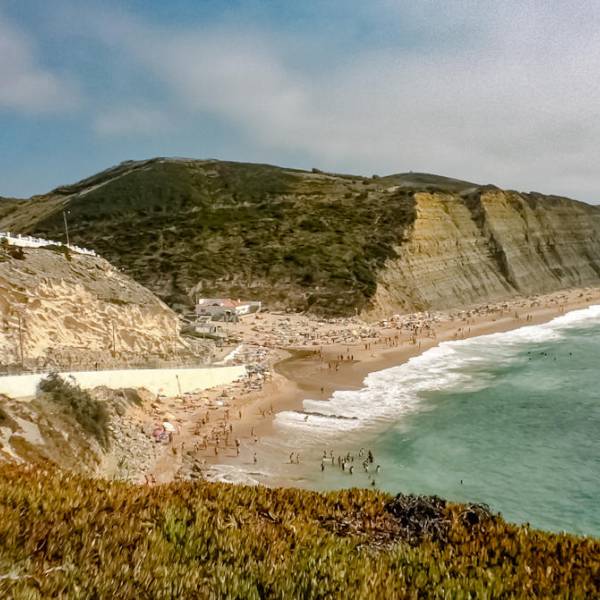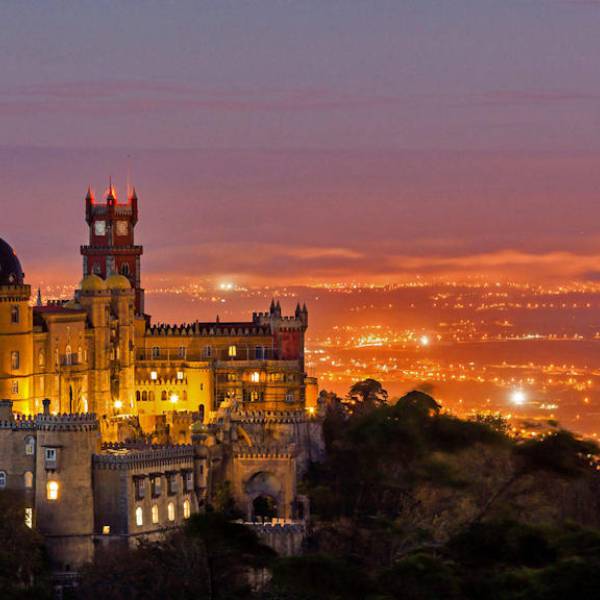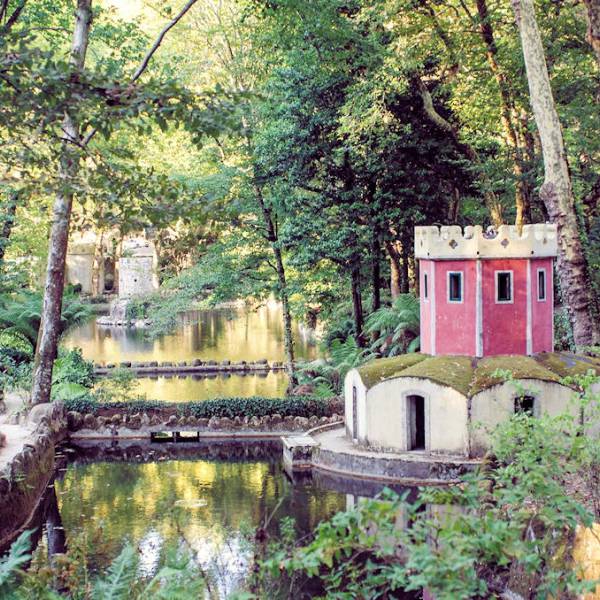The Castle of the Moors is a captivating day trip from Lisbon. Perched high on a hill in Sintra, this medieval fortress offers breathtaking views of the surrounding countryside. Explore its ancient walls, towers, and ramparts, and imagine the history that unfolded within its walls. A visit to the Castle of the Moors is a journey back in time to the days of knights and kings.
During the Muslim invasion of the Iberian Peninsula in the 8th century, the region was occupied, and its settlement was named "as-Shantara." Scholars agree that it was the Muslims who initially fortified the rocky hill between the 8th and 9th centuries to strategically control the land routes connecting Sintra to Mafra, Cascais, and Lisbon.
As part of the Badajoz taifa's domains, in the early 12th century, faced with the threat posed by the forces of Ali ibn Yusuf, who had come from North Africa to conquer and reunite the Almoravid domains, the ruler of Badajoz, Mutavaquil, handed over Sintra, along with Santarém and Lisbon, to King Afonso VI of Leon and Castile in the spring of 1093, aiming for a defensive alliance that did not hold. Engaged in the defense of his own territories, the Christian sovereign was unable to assist the Moorish ruler, whose territories fell to the invaders the following year, in 1094. Thus, Lisbon, Santarém, and Sintra returned to Muslim rule, now under the Almoravids.
The medieval castle played a significant role in the history of Sintra. Its fate was closely tied to that of Lisbon, which was reconquered by the forces of Afonso VI of Leon and Castile, only to return to Muslim rule in 1095 until it voluntarily and definitively surrendered to Afonso I Henriques (1112-1185) in 1147. In order to repopulate and defend the area, the king granted a Charter to Sintra in 1154 and made repairs to its defenses, including the construction of the Church of São Pedro de Penaferrim.
His son and successor, Sancho I (1185-1211), also took care of the castle, remodeling and reinforcing its defenses. Similarly, centuries later, Fernando I (1367-1383) also made improvements to the castle, which was besieged by Castilian troops during the Fernando Wars. During the crisis of 1383-1385, it was held by D. Henrique Manuel de Vilhena, who sided with D. Beatriz, only surrendering the castle after D. John I's victory at the Battle of Aljubarrota.
Lisbon.vip Recommends
In the 19th century, during the Romantic era, Sintra gained popularity as a tourist destination, attracting artists, writers, and aristocrats from all over Europe. This newfound interest in the region's history and architecture sparked a restoration movement, and the Castle of the Moors became the focus of preservation efforts.
In 1838, King Ferdinand II acquired the castle and initiated a restoration project under the supervision of German architect Baron Wilhelm Ludwig von Eschwege. The aim was to revive the castle's medieval appearance and showcase its historical significance. The restoration involved rebuilding walls, towers, and battlements, while preserving the original layout and features.
Today, the Castle of the Moors stands as a remarkable testament to medieval architecture and engineering. Visitors can explore its walls, climb its towers, and enjoy breathtaking panoramic views of the surrounding landscape. The castle's strategic location, combined with its rich history and stunning views, makes it a must-visit attraction in Sintra.
In addition to its historical and architectural significance, the Castle of the Moors is also surrounded by beautiful natural scenery. The Sintra Mountains, with their lush vegetation and diverse wildlife, provide a picturesque backdrop to the castle. The area is part of the Sintra-Cascais Natural Park, a protected area known for its unique biodiversity.
Overall, the Castle of the Moors in Sintra is a captivating blend of history, architecture, and natural beauty. It offers visitors a chance to step back in time, explore medieval fortifications, and immerse themselves in the enchanting atmosphere of one of Portugal's most iconic landmarks.
Map View






